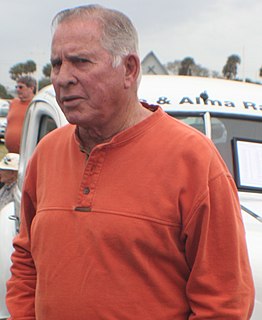| Race details [1] | |||
|---|---|---|---|
| Race 26 of 49 in the 1968 NASCAR Grand National Series season | |||
 Official ticket form for the 1968 Islip 300 | |||
| Date | July 7, 1968 | ||
| Official name | Islip 300 | ||
| Location | Islip Speedway, (Islip, New York) | ||
| Course | Permanent racing facility 0.200 mi (0.322 km) | ||
| Distance | 250 laps, 60.0 mi (90.0 km) | ||
| Weather | Temperatures ranging between 59 °F (15 °C) and 70.6 °F (21.4 °C); wind speeds of 14 miles per hour (23 km/h) | ||
| Average speed | 48.561 miles per hour (78.151 km/h) | ||
| Attendance | 4,600 [2] | ||
| Pole position | |||
| Driver | Ray Fox | ||
| Time | 13.880 | ||
| Most laps led | |||
| Driver | Richard Petty | Petty Enterprises | |
| Laps | 97 | ||
| Winner | |||
| No. 2 | Bobby Allison | J.D. Bracken | |
The 1968 Islip 300 was a NASCAR Grand National Series (now Monster Energy NASCAR Cup Series) event that was held on July 7, 1968, at Islip Speedway in Islip, New York.
The National Association for Stock Car Auto Racing (NASCAR) is an American auto racing sanctioning and operating company that is best known for stock-car racing. Its three largest or National series are the Monster Energy NASCAR Cup Series, the Xfinity Series, and the Gander Outdoors Truck Series. Regional series include the NASCAR K&N Pro Series East and West, the Whelen Modified Tour, NASCAR Pinty's Series, NASCAR Whelen Euro Series, and NASCAR PEAK Mexico Series. NASCAR sanctions over 1,500 races at over 100 tracks in 48 US states as well as in Canada, Mexico, and Europe. NASCAR has presented races at the Suzuka and Motegi circuits in Japan, and the Calder Park Thunderdome in Australia. NASCAR also ventures into eSports via the PEAK Antifreeze NASCAR iRacing Series and a sanctioned ladder system on that title.

Islip Speedway was a .2-mile (320-meter) oval race track in Islip, New York which was open from 1947 until 1984. It is the smallest track ever to host NASCAR's Grand National Series, from 1964 to 1971. The first demolition derby took place at Islip Speedway in 1958. The idea was patented by Larry Mendelsohn, who worked at Islip Speedway. The speedway has since been demolished and replaced with Cookies United, a cookie factory.
Contents
The transition to purpose-built racecars began in the early 1960s and occurred gradually over that decade. Changes made to the sport by the late 1960s brought an end to the "strictly stock" vehicles of the 1950s.














